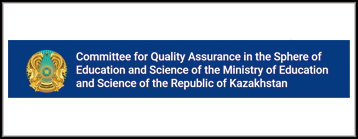Land Suitability for Wind Farm Development in Pandeglang Regency, Banten Province, Indonesia
DOI:
https://doi.org/10.31643/2026/6445.17Keywords:
Renewable Energy, Wind Farm, Wind Power Plant.Abstract
The use of wind as the main energy in power plants cannot be separated from the ability of windmills to produce energy to meet needs. Based on a literature study, the Ministry of Energy and Mineral Resources 2018 released data related to the total potential of wind power in Banten Province of 300 MW spread across two areas, namely Lebak Regency and Pandeglang Regency with the potential in each area of 150 MW, thus it is necessary to conduct a spatial study related to the appropriate location for the construction of a new wind farm. Topographic factors (elevation, viewshed, slope, aspect direction, and area), technical (wind speed and power grid proximity), environmental (distance from lakes, rivers, reservoirs, dams, and land cover), and socioeconomic (settlement and transportation) are parameters that determine the success and potential of placing windmills as environmentally friendly renewable energy. This study aimed to determine the potential for wind farm development areas in Pandeglang Regency, Banten Province. The method used to analyze these parameters is the Multi-Weighted Criteria Modeler, by giving weight to each parameter in raster format and classified using the deterministic logic method and selecting areas with a large area coverage (≥ 10,000 m2) using boolean. The results of this study indicate that there is an area of 350.71 km² that is suitable for the construction of a new wind farm in Pandeglang Regency. The final suitability map can be used as a guide for more detailed wind farm location exploration. This study concludes that Indonesia has great potential for the development of Wind Power Plants, especially in Pandeglang Regency. However, a wider research area coverage is needed to find out which areas have the potential for the development of Wind Power Plants in Indonesia.
Downloads
References
Brian Yuliant. Creating New Technologies for Renewable Energy Sources. 2006.
Amri D S, Rivaldi A H, Husin I, Muhamad I, Ali J, Nural F. Application of Wind Power Plant Using Smart Auto Change and Arduino-based Internet of Things Monitoring. Scientific Journal of Mechanical Engineering. 2023; 4(2):28-34. https://doi.org/10.51510/sinergipolmed.v4i2.1061
Syakirman M, Bintoro A, & Hasibuan A. Voltage Repair Simulation with Wind Turbine Installation in Lhokseumawe City Radial Distribution System Using Etap. Journal of Electrical Energy. 2018; 7(2):1-5. https://doi.org/10.29103/jee.v7i2.1051
Suyono H, Prabawanti DO, Shidiq M, Hasanah RN, Wibawa U, & Hasibuan A. Wind speed forecasting in Malang City, Indonesia uses an adaptive neuro-fuzzy inference system and an integrated autoregressive moving average method. In the 2020 International Conference on Technology and Policy in Energy and Electric Power (ICT-PEP). 2020, 131-136. https://doi.org/10.1109/ICT-PEP50916.2020.9249867
Muyen S Tamura, Junji Toshiaki. Stability Augmentation of a Grid-Connected Wind Farm. Springer. London. 2009.
Fachri MR, & Hendrayana H. Analysis of Wind Energy Potential with Weibull Distribution for Wind Power Plant in Banda Aceh. CIRCUIT: Scientific Journal of Electrical Engineering Education. 2017; 1(1). http://dx.doi.org/10.22373/crc.v1i1.1377
Ministry of Energy and Mineral Resources. Indonesia Energy Outlook. Jakarta. 2018.
Prasetyo A. Study of the Potential Application and Development of Wind Power Plants in Indonesia. Journal of JOM Electrical Engineering. 2019; 1(1).
Idakwo H O, Adamu P I, Stephen V, & Bello I. Modelling and Implementation of a Hybrid Renewable Energy System for a Stand-Alone Application. Saudi J Eng Technol. 2022; 7(8):399-413.
Simoes S, Zeeyringerm N, Hult T. The Impact of Location on Competitiveness of Wind and PV Electricity Generation-Case Study for Austria. International Conference on the European Energy Market (EEM). 2013.
Abdel Hamid R. A GIS DSS for Wind Farm Industry in Egypt. International Conference & Utility Exhibition on Power and Energy Systems; Issue ang Prospects for Asia (ICUE). 2011.
National Energy Council. Indonesia Energy Outlook. Jakarta. Secretariat General of National Energy. 2016.
Syaifudin I, Yunanda A B, Kridoyono A. Simulation of Wind Power Plant Monitoring Tool Using Microcontroller Through PC Monitor. Journal KONVERGENSI. 2019; 15(1):49-56.
Muhtar G A. Location of Wind Power Plant Development Using GIS Metode in Gorontalo Province. Azimut Journal. 2019; 2(2):155-164.
Guttman L. A Basic for Scaling Qualitative Data, Journal Social. 1944; 9. https://doi.org/10.2307/2086306
Wamiliana O D, Shaara S. Application Development for Simplifying Boolean Algebra in the Sum-of- Product Form Using the Quine McCluskey Method. Journal of Computer Science Computing Unila Publishing Network all Right Reserved. 2013; 1(2).
Central Bureau of Statistics. Pandeglang Regency in Figures 2023. 2023.
Sujatmiko and Santosa S. Geological Map of Leuwidamar Sheet, Java, scale 1:100,000 Puslitbang Geologi, Bandung.
Aqli W. Buffer Analysis in Geographic Information Systems for Regional Spatial Planning. INERSIA. 2010; 6(2):192-201.
Idrizi B, Izeiroski A, Kabashi I, Lukovska M. GIS Spatial Analysis for Determination of Potential Areas for Installing Wind Power Stations. 2018; 5(15):163-175.
Downloads
Published
How to Cite
Issue
Section
License
Copyright (c) 2025 F.R.Z. Suci, I.B. Muhamad

This work is licensed under a Creative Commons Attribution 4.0 International License.


























